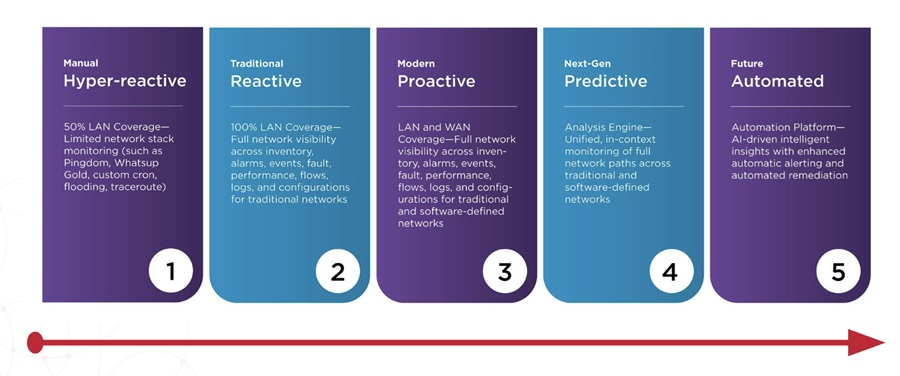Network Performance Monitor (NPM) from SolarWinds, a provider of IT management software, has been certified within the Dell Systems Management Technology Partner Program.
In order to receive this certification, SolarWinds NPM demonstrated its ability to monitor the availability and performance of key Dell PowerEdge server statistics.
The Dell Technology Partner Program is designed to help customers identify trusted solutions to solve their IT problems.
The SolarWinds NPM integration with the OpenManage Server Administrator (OMSA) software agent gives IT professionals the ability to monitor the availability and performance of key Dell PowerEdge server statistics including the status of:
* Batteries
* Controllers
* Event Logs
* Processors
* Virtual Disks
* Voltage Probes
* Cooling Devices and Fans
* Power Supplies
* Chassis Intrusion Detection
“Dell’s OpenManage certification extends and protects our customers’ existing investments in systems management tools, resources and skill-sets,” said Kevin Noreen, Director of Product Management at Dell.
“SolarWinds NPM is a commonly adopted system management console, so it’s a great combination with Dell OpenManage systems management software and Dell PowerEdge servers. This proven integration enables SolarWinds customers to monitor Dell PowerEdge servers on the network via the management solution of their choice.”
The Latest
According to Auvik's 2025 IT Trends Report, 60% of IT professionals feel at least moderately burned out on the job, with 43% stating that their workload is contributing to work stress. At the same time, many IT professionals are naming AI and machine learning as key areas they'd most like to upskill ...
Businesses that face downtime or outages risk financial and reputational damage, as well as reducing partner, shareholder, and customer trust. One of the major challenges that enterprises face is implementing a robust business continuity plan. What's the solution? The answer may lie in disaster recovery tactics such as truly immutable storage and regular disaster recovery testing ...
IT spending is expected to jump nearly 10% in 2025, and organizations are now facing pressure to manage costs without slowing down critical functions like observability. To meet the challenge, leaders are turning to smarter, more cost effective business strategies. Enter stage right: OpenTelemetry, the missing piece of the puzzle that is no longer just an option but rather a strategic advantage ...
Amidst the threat of cyberhacks and data breaches, companies install several security measures to keep their business safely afloat. These measures aim to protect businesses, employees, and crucial data. Yet, employees perceive them as burdensome. Frustrated with complex logins, slow access, and constant security checks, workers decide to completely bypass all security set-ups ...

In MEAN TIME TO INSIGHT Episode 13, Shamus McGillicuddy, VP of Research, Network Infrastructure and Operations, at EMA discusses hybrid multi-cloud networking strategy ...
In high-traffic environments, the sheer volume and unpredictable nature of network incidents can quickly overwhelm even the most skilled teams, hindering their ability to react swiftly and effectively, potentially impacting service availability and overall business performance. This is where closed-loop remediation comes into the picture: an IT management concept designed to address the escalating complexity of modern networks ...
In 2025, enterprise workflows are undergoing a seismic shift. Propelled by breakthroughs in generative AI (GenAI), large language models (LLMs), and natural language processing (NLP), a new paradigm is emerging — agentic AI. This technology is not just automating tasks; it's reimagining how organizations make decisions, engage customers, and operate at scale ...
In the early days of the cloud revolution, business leaders perceived cloud services as a means of sidelining IT organizations. IT was too slow, too expensive, or incapable of supporting new technologies. With a team of developers, line of business managers could deploy new applications and services in the cloud. IT has been fighting to retake control ever since. Today, IT is back in the driver's seat, according to new research by Enterprise Management Associates (EMA) ...
In today's fast-paced and increasingly complex network environments, Network Operations Centers (NOCs) are the backbone of ensuring continuous uptime, smooth service delivery, and rapid issue resolution. However, the challenges faced by NOC teams are only growing. In a recent study, 78% state network complexity has grown significantly over the last few years while 84% regularly learn about network issues from users. It is imperative we adopt a new approach to managing today's network experiences ...

From growing reliance on FinOps teams to the increasing attention on artificial intelligence (AI), and software licensing, the Flexera 2025 State of the Cloud Report digs into how organizations are improving cloud spend efficiency, while tackling the complexities of emerging technologies ...
